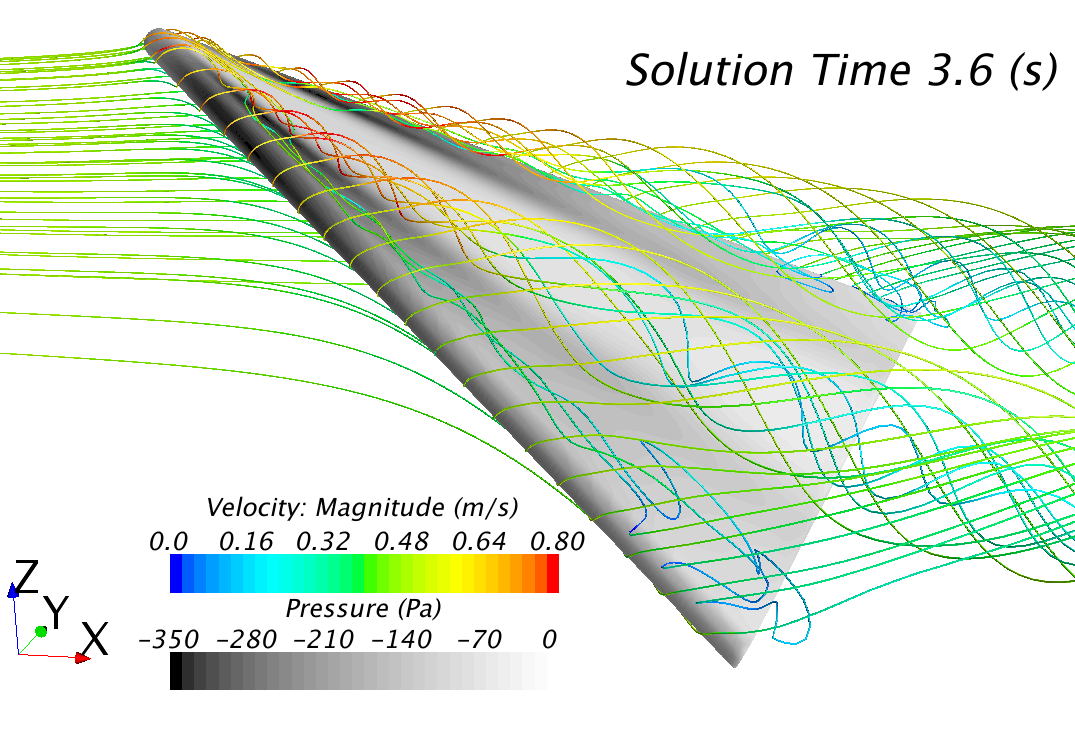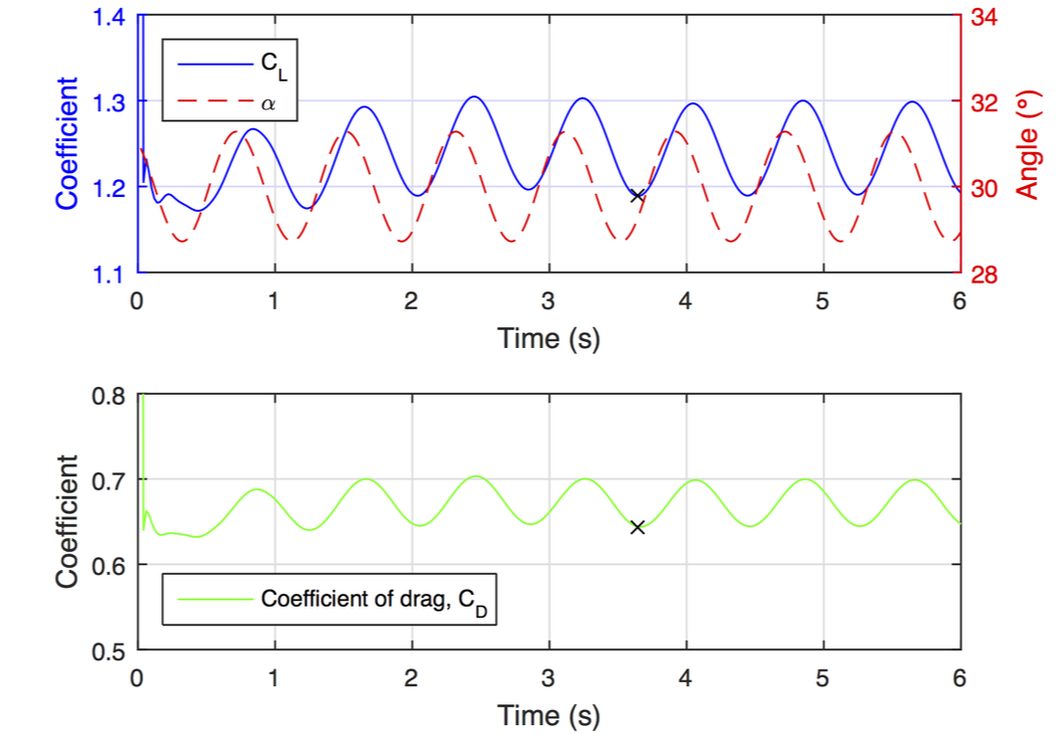Delta Wing in Waves
Delta wings allow for generation of lift forces at very large angles of attack, where conventional high-aspect-ratio wings would stall. Moreover, their shape causes the force variations to be small when the angle of attack is changing in time. For those reasons, delta wings are considered as a suitable submerged hydrofoil for a small marine vehicle.
The goal of the project was to model a submerged delta wing to estimate the hydro-dynamic lift and drag coefficients and the flow field around the wing when sailing in head waves. An unsteady vortex structure was observed at the suction surface of the hydrofoil. Detailed convergence uncertainty study was conducted and the results were compared with literature.



